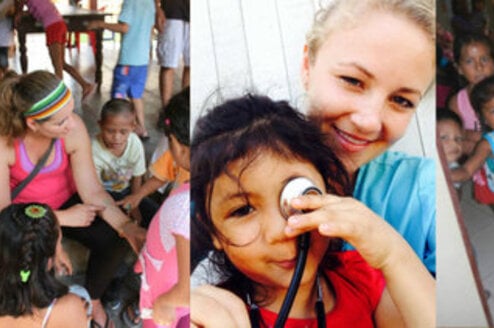HIV Volunteer Abroad Programs
HIV Volunteer Programs Abroad
Pagination
About
According to the WHO HIV Factsheet, “HIV continues to be a major global public health issue, having claimed more than 39 million lives so far. In 2013, 1.5 million people died from HIV-related causes globally.” Although much progress has been made in recent years through global education, prevention and treatment initiatives, there remains much to be done. (UNAIDS)
Prevention and awareness efforts often encounter barriers due to cultural stigmas and misunderstanding. Volunteering for such efforts requires patience and cultural sensitivity. Volunteers should be passionate about understanding and appreciating the local culture.
Photo credit: Pacific Air Forces
Program Types
Healthcare
Help address the immediate healthcare needs of those living with HIV through working in hospitals or clinics. Some volunteer programs place volunteers at local healthcare facilities, where they help with patient intake, treatment and care, or lab work and research.
These projects are often limited to individuals with some healthcare background, as they do require some special knowledge and specific skills.
Teaching and Education
Education initiatives are a huge part of the global effort to combat HIV. Volunteers can participate in this effort through conducting awareness classes or producing educational materials.
This option is available to individuals without healthcare backgrounds and often involves community outreach and group presentations.
Educating local populations about HIV and how it is spread is an integral part of prevention initiatives and can be an exciting, if challenging, project to be involved in.
Community Support
The HIV/AIDS epidemic impacts entire communities. Help support those suffering from the loss and grief associated with HIV/AIDS through volunteering at orphanages, food banks, and other community organizations.
Many volunteers programs engage with HIV by offering their support and assistance to provide for the physical and emotional needs of communities that are impacted by HIV.
Volunteering activities in these programs vary greatly but might include teaching courses or leading crafts/playtime at local orphanages, preparing and serving meals, or organizing and distributing donations.
Popular Destinations
Sub-Saharan Africa
HIV is most prevalent in Sub-Saharan Africa, especially in the nations of South Africa, Botswana, Lesotho, and Swaziland.
Several key issues have been identified as key drivers for the spread of HIV in these areas, including: polygamous relationships, unemployment, labor migration and displacement as a result of conflict. (AVERT)
Asia
Outside of Sub-Saharan Africa, Asia experiences the highest AIDS death toll. Almost 5 million people are living with HIV in South, East, and South-East Asia. Transmission routes in Asia differ slightly from those in Africa, and include the following: unprotected paid sex, injecting drug use, and sex between men.
Asia has seen great success of large-scale prevention initiatives, largely those aimed at educating sex workers, and at making condoms and “STI testing” more widely available. (AVERT)
Latin America
Compared to Sub-Saharan Africa and Asia, the number of people infected with HIV in Latin America may seem small. However, with 1.5 million people living with HIV, the number of lives affects is quite substantial.
High levels of poverty and HIV-related discrimination have proved difficult barriers to addressing the epidemic in these areas. (AVERT)
Planning Your Trip
- WHO: The World Health Organization provides in-depth information and statistics about all sorts of health issues, including HIV.
- Global Volunteer Network: GVN is a prolific network designed to help place you in international volunteer programs, and offers several programs that specifically address the issues of HIV.
- Projects Abroad: Projects Abroad also offers great volunteer program placement with many locations in Africa, Asia and Latin America.
- AVERT: AVERT is an international HIV/AIDS organization with a great network of programs and a very informative website. Their website is one of the most-viewed websites concerning the issues of HIV/AIDS, reaching over 200 countries. Look here for a better understanding about the epidemic, and about what initiatives are underway to address it.
Contributed by Maxine Marshall














